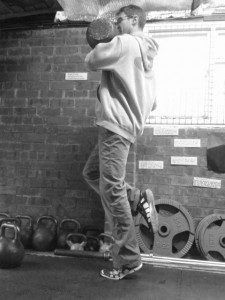A couple of weeks ago I woke up on Sunday after two days of decent running mileage wearing a rucksack to find that it was painful at the bottom of my achillies tendon. It hurt to put weight on my left foot, it hurt to walk, it really hurt to walk down stairs. Two months out from The Mountain Rescue Spine Challenger*, it wasn’t exactly the greatest of things to assist my preparation. Thankfully, I had a decent amount of resources at my fingertips, and a good amount of information in my head to help me out.
Here’s my tips to help you if you’re injured in the run up to an event:
-

Weighted calf raises
Accept that you are injured, and don’t try to run through it. As much as it was tempting to carry on as normal, and just try and over-ride what my body was telling me, I made the conscious effort to rest for a sensible period of time. I had 2 months left to prepare for the race. Doing things correctly will hopefully mean that I can be back in about 4 weeks time. Doing things incorrectly will mean a constant and consistent reduction in ability to run, and it’ll get to the day and I still won’t have got any better. In fact it might have got worse.
- Look at the information out there. There has been a lot of research on tendons and their rehabilitation recently. The basic information is this… Rest until it stops hurting all the time. Introduce Isometric holds to help reduce pain. Introduce regular heavy weighted isolated exercise – be diligent. Once it seems to have healed, give it a bit more time before getting back to running, and when you do so, do it in a graduated and intelligent manner.
- Don’t Panic. Seriously I mean it. There’s no point raising your stress levels and wasting energy on this. Your body needs time to heal so relax into the process and learn about your body along the journey.
So there you have it. In these past few weeks I have done a fair amount of non-weight bearing exercise to keep up aerobic power – cycling and rowing and the like, and I have been diligent in my pursuit of loading my achillies with heavy single leg raises. It has all been recorded in my training diary, along with how I feel, and how the leg is feeling, and I was able to go for my first run on Saturday, a 5k parkrun.
There was no pain whatsoever as I was running, but the real test would be getting up the next morning. I won’t say there was no pain – but then again, it was really a slight niggle, maybe a 1/10. Pretty good.
The weighted raises will continue for the next month, and this week I am looking at a graduated return to running. I have to thank all the people who put so much time into research and publication of physiotherapy literature, and I am happy to say that in this case, the information seems to be working.
With any luck, next time I blog, things will be continuing to get better.
Tim
*The Spine Challenger is a long distance challenge held in January. In 2016 there is a new class, the Montane Mountain Rescue Challenger – which sees members of the Mountain Rescue Teams taking part in this 108 mile race heading North on the Pennine Way from Edale to Hawes. Tim is running as part of the team in which he is a member, Glossop Mountain Rescue Team. If you wish to sponsor the team you can do so on their JustGiving page.




